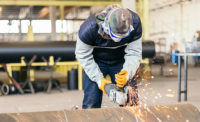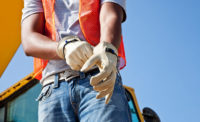Imagine a work setting with all the latest and greatest eye washes and safety showers installed in every area that poses an exposure risk with easy and unobstructed access.
While this scenario appears to depict a facility well-equipped to handle an exposure crisis, the ultimate question is: “Are the employees adequately trained to properly and successfully use the eyewashes and showers in the event of an emergency?”
Employees who lack working knowledge and understanding of safety showers are at a clear disadvantage to use them correctly when faced with exposure. It may seem like a rudimentary reminder but it’s important to remember the equipment can’t do the job on its own – it must be operated by trained individuals.
Training benefits
In short, good training procedures will:
- stop and reduce worker injuries
- speed up emergency medical response
- prevent complacency
- ensure ANSI compliance
- improve overall efficiencies relating to operations and costs
Unfortunately, lack of time is often one of the biggest challenges to training. Workplaces and workers are notoriously busy and schedules are tight. However, working with third-party trainers, such as safety consultants and equipment manufacturers provide several benefits: they provide the most up-to-date information and learning activities, and bring valuable perspectives through training many others in the industry. Manufacturers also provide site surveys to ensure proper placement of equipment.
Recognizing obstacles to using safety fixtures
Safety training expert, Julie LaRose, MS, CSP, ARM, CHMM, Soteria Safety, LLC, makes the point that, when faced with a crisis, our primitive instincts can take over. Understanding human behavior in a crisis is an important conversation to have as part of employee training programs. For example:
- “Fight, flight, freeze or faint” response. It’s often difficult for individuals to think clearly and logically in an emergency. “If someone is exposed to a caustic material, for example, it’s natural for the primitive parts of the brain to take over,” LaRose said. “When suddenly forced to deal with the physical pain of chemical burns, a common reaction is to panic and run to a known familiar source of water. This typically involves running to the bathroom to access water from a sink. When every second counts, this instinctual response significantly exacerbates the severity of the injury.
- Making a watery mess. “When safety showers are deployed, a deluge of water is dispensed – for at least 15 minutes – to remove the contaminant. For some workers, the thought of causing a scene by creating a mini-flood at work is enough to discourage the use of the emergency equipment,” LaRose said. “Assure employees that there is a plan in place to address discharged water. Employees should not hesitate to deploy the fixture and remove the contaminant from their body as quickly as possible. The longer the contaminant stays in contact with the skin the greater the extent of injury.”
- Fear of disrobing around others. “Taking off clothing in front of co-workers is the subject of most people’s nightmares,” she notes. “The embarrassment associated with the sudden need to disrobe can be tempered by clearing the area of non-emergency responders and providing the affected individual with as much privacy as possible.” Installing customized shower curtains or keeping blankets near shower equipment can help provide extra privacy when needed.
Safety response is a force of habit
Because rapid response to chemical exposure incidents is so critical, hands-on training and drills are key. Repeated experience with using safety showers and eye washes will help emergency response become second nature.
“The more you explain the safety framework, and develop the habit of using the fixtures, the better equipped – and more successful – they’ll be in the event of an emergency,” LaRose said.
For example, LaRose offers some safety shower training suggestions. Reinforce proper safety shower response:
- Train employees to quickly protect themselves before responding to the exposure.
- Maneuver the person to the source of water and immediately deploy the fixture.
- Don’t pull contaminated clothing across unprotected skin. For example, safety shears can be used to remove a shirt instead of pulling it over the face and head.
- Deploying a safety shower and assisting the exposed worker is a multi-person job. Ensure there is a system in place so that responders can provide necessary assistance. Emergency signaling systems used with safety equipment may be used to help alert responders.
Safety shower training suggestions
Use role-play techniques to help employees mentally and physically work through processes when faced with an emergency. To simulate their eyes being impaired, consider blindfolding an employee to reduce visibility and have them access the closest plumbed fixture. Use caution when blindfolding for training purposes, as it is embarrassing for anyone to sustain injuries during safety training.
Involve employees in equipment inspections and activations to help them understand the equipment’s purpose and function. Since worksite materials, machinery, employees, operations and risks can change frequently, inspections help keep safety equipment ready when workers need it. A dated checklist for inspections helps to maintain the equipment in emergency-ready condition.
Review which safety fixture is appropriate for specific hazards. Safety data sheets provide information on the appropriate fixture to use in case of exposures. Safety consultants and manufacturers offer customized site surveys to help identify placement for different types of fixtures. They may also provide assistance with hands-on training, reference materials, training guides and much more to help provide the safest workplace possible.



